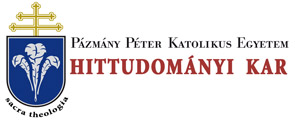Folia Theologica 18. (2007)
Szabolcs Anzelm Szuromi: Peculiarities of the conception of 'sacred power' and its exercise between 1073 and 1303
PECULIARITIES OF THE CONCEPTION 263 was the above amentined strong intention, that the confusing ideas concerning the competence of the secular authority and of the ecclesiastical power should be suppressed.7 We should not forget, that the ruler, who himself was also a member of the Catholic Church as faithful, did not limit the autonomy of the Church because of some ideological or religious concept. Therefore, the Gregorian measures did not mean any type of action against the monarch who was the adinistrator of the secular power. These measures were to further the independence of the intrinsic sacred power of the Church from the secular authority.8 The separation of the spiritual (ecclesiastical) and secular (ruling) competence, and the clarification of their relationship is set in proper light by the contents of those twenty-seven articles which were compiled by Pope Gregory VII in 1075, namely the Dictatus Papae.9 The introduction of ecclesiastical officials into feudal estates (e.g. "investitura") created the assumption that the secular authority should be over the ecclesiastical power. But the Dictatus Papae argued in explicit form that only the Roman Pontiff has authority to remove bishops, or to name them again (3); the Pope has the right to transfer bishops from their see into another (13). The particular rights of the Holy Father, that he has authority to remove the emperor from his throne (12), and moreover, that the pope can absolve the peoples from their oath of allegiance (27) these were unacceptable for the sovereign. However, these rights were logical consequences of the nature of that sacred power which was entrusted to the apostles in the Church, and of the mandate of the ruler which was administered by himself as one of the members of the Church.10 If we take a glance at the text of the Der Investiturstreit, Stuttgart 1982. Constable, G., Past and Present in the Eleventh and Twelfth Centuries: Perceptions of Time and Change, in L ’Europa dei secoli XI e XII fra novità e tradizione. Sviluppi di una cultura (Miscellanea del centro di studi medioevali 12), Milan 1989. 135-170. 7 Cf. FEINE, H.E., Kirchliche Rechtsgeschichte I. Die Katolische Kirche, Weimar 1955. 237-238. 8 SZUROMI, Sz.A., Egyházi intézménytörténet (Bibliotheca Instituti Postgradualis Iuris Canonici Universitatis Catholicae de Petro Pázmány nominatae 1/5), Budapest 2003. 96-102. 9 ERDŐ, P., Die Quellen des Kirchenrechts (Adnotationes in ius canonicum 23), Frankfurt am Main 2002. 92. 10 CAPITAS, O., Episcopato ed ecclesiologia nell’etä gregoriana, in Le istituzioni ecclesiastiche della societas Christiana dei secoli X-XII: papato,
